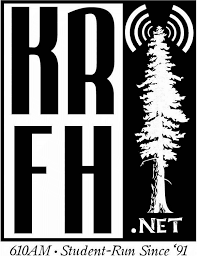Pirate radio? Ever heard of it? Do you know where the things you hear on the radio are broadcasting from? With hundreds of different radio stations to choose from, how do you know what is factual, legal, and reliable?

Act one, action! According to the This American Life, the story of the radio can be told in three parts; illegal radio stations, talk show radio stations (like Howard Stern), and popular radio. Illegal radio stations, also known as pirate radio stations “keep appearing and disappearing and appearing again” (1998) providing their listeners with unregulated conversations and music. Pirate radio stations are “exciting” as they leave much mystery in where they broadcast from and who the broadcasters are. Talk show radio, unlike illegal radio stations are regulated in what they can say. Unlike any other station on the radio, Howard Stern decides what he is going to talk about everyday, usually local news. Originally, talk show radio was a service provided for the reading impaired. Men would read the newspaper for people who could not read the paper themselves. “Every story would end with a touch of banter” (1998) which the audience found intriguing. People cannot turn talk show radio off which leads to popular radio. Popular radio is used by multiple generations. The “radio has the largest reach with Generation X (ages 35-54), with 80.5 million listeners tuning during an average month (97% of the Gen X population). This is followed by Millennials (18-34 year olds), with 71.6 million listeners tuning in monthly (95% of the Millennial population). Meanwhile, radio reaches 41.2 million monthly listeners among Baby Boomers (ages 55-64), representing 98% of the Baby Boomer population” (Nielson, 2018). Popular radio is a “science”.
“Each week, more Americans tune to AM/FM radio than any other platform” (Nielson, 2018) to access news, music, and upcoming events. Popular radio allows for radio volunteers and radio users to take surveys based on how the radio is doing considering song choice. “Once you get a record on the air, you have to know when to take it off, because there is nothing that will drive a person away more than a song they are tired of” (1998) resulting in a playback formula. The more listeners who tune into a specific song, the more the song is played, the less listeners, the less plays.
Act two, action! In my life, I’ve realized that I hardly listen to the radio due to the simple fact that the same song is repeated multiple times a day with advertisements between every song. I prefer listening to Spotify, as with a paid subscription advertisements are no longer a disturbance. If and when I absolutely have to listen to the radio, I prefer listening to stations like KRFH (Radio Free Humboldt) which is student ran. Student ran article “About KRFH” (2018), published on http://www.krfh.net/about/ describes how two professors and a few students got together to run KFRH 105.1 FM. The students explain how the radio was originally only a local broadcast station, but through donations and support, KRFH was able to upgrade to a larger transmitter. The student’s purpose behind KRFH is to share and distribute music they personally enjoy with others, the disc jockeys or DJs have “many unique personalities and formats hitting our airwaves every day, it’s hard to foresee what you’ll hear next on KRFH unless you check out the schedule here on our website, which is precisely why KRFH is great.” The radio station does not care so much for the influences of outside society, rather they allow the students to be creative and unique. With the station being ran by students, there are often flaws and mistakes which the common listener can relate too. With popular radio, everything seems so structured. Song, song break, commercial. That is the way popular radio works.

Act three, action! I predict the future of the radio to be dynamic and changing as broadcasters are able to transmit virtually anything to anyone. I believe that the radio is the most accessible type of transmitting technology that the world currently has. I wish the future of the radio would follow the footsteps made by KRFH in making broadcasts about community rather than profit. I feel that radio is all about profits and making singer/songwriters famous rather than focusing on what the community prefers or desires. What steps should we take to regain interpersonal radio control? I would love to be able to tune in to someone I personally know rather than a mass media radio DJ!
Sources: https://www.thisamericanlife.org/100/radio
Thank you for reading another post!
I like that you gave a little explanation as to the difference between talk shows and pirate radio. I had no idea that pirate radio was a thing until we had listened to the NPR podcast. Super interesting blog post, and I enjoyed how you formatted it. Different and unique.
LikeLike
Excellent post. Thanks for giving a shout-out to our own student radio station KRFH!
LikeLike
I remember my dad telling me about private radio stations he use to hear when he was younger. It was so cool to think that there are these mystery locations broadcasting uncensored and unregulated music or talk. I can just imagine in those days of the 60’s and 70’s it must have been the coolest thing to have a bunch of teenagers huddled around their car radio listening to a forbidden station. Great blog post.
LikeLike
Lauren
I liked the video you included about why am/fm radio stations play the same songs on repeat. As a viewer and reader I liked how you broke up each act with a video or picture in between so we know where one ends and another begins, especially the KRFH radio station sticker. I thought you did a great job with describing each act and going into detail with this blog. I learned a lot.
LikeLike